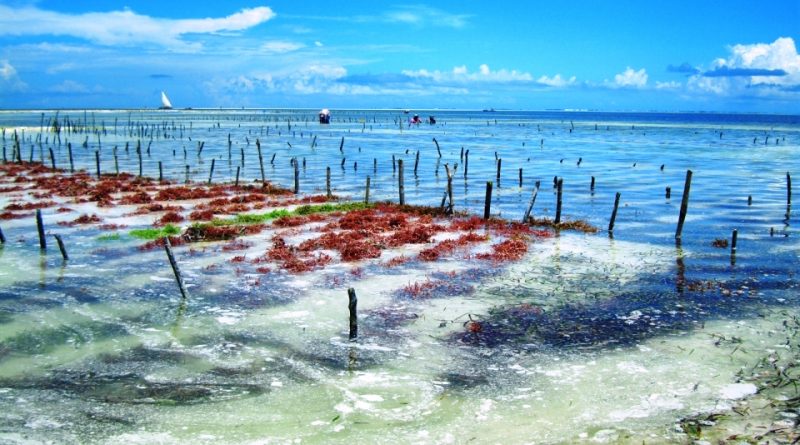Eucheumatopsis isiformis
Eucheumatopsis isiformis
Eucheuma isiform (Eucheumatopsis isiformis (C. Agardh) Núñez-Resendiz, Dreckmann & Sentíes, 2019) is a seaweed belonging to the Solieriaceae family.
Systematics –
From a systematic point of view it belongs to:
Eukaryota Domain,
Kingdom Plantae,
Sub-kingdom Biliphyta,
Phylum Rhodophyta,
Subphylum Rhodophytina,
Class Florideophyceae,
Subclass Rhodymeniophycidae,
Order Gigartinales,
Family Solieriaceae,
Genus Eucheuma
Species E. isiform.
Basionimo is the term:
– Sphaerococcus isiformis C. Agardh.
The terms are synonymous:
– Eucheuma isogene (C. Agardh) J. Agardh 1847;
– Gigartina isiform (C. Agardh) Endlicher, 1843;
– Hypnea wurdemannii Harvey, 1853.
Etymology –
The term Eucheumatopsis comes from the Latin eucheuma, derived from the Greek words eu- εὖ, εὐ-, which means good and from cheuma, χεῦμα, “what is poured”.
The specific isiform epithet is unclear; it should come from the two terms isi, of Greek origin and forma, from the Latin –formis.
Geographic Distribution and Habitat –
Eucheumatopsis isiform is found mainly in the equatorial area in the Indo-Pacific region, and more concentrated in Southeast Asia.
This species, along with others of the same genus, has been distributed in many areas far from its original natural habitats, including Japan, Hawaii, and the islands of the South Pacific.
Its natural habitat is usually that under low tide, growing from sandy areas to rocky bottoms along a coral reef, where water movement is slow to moderate.
Description –
The growth of this alga is similar to that of terrestrial plant species and is also capable of dividing to form new growing branches. It also shows a triphasic life cycle, consisting of a gametophyte (n) (dioecious), a carposporophyte (2n) and a sporophyte (2n). Both the gametophyte and the more robust sporophyte stage are significant for the development of algae, where their characteristics allow for greater vegetative regeneration.
Cultivation –
This species, together with others of the Eucheuma genus, are cultivated in different parts of the world and are used in the food industry (especially to produce the thickener known as carrageenan) and that of cosmetics.
Algae are grown in rows, using bamboo sticks or other similar supports as support; the harvest is very frequent.
Customs and Traditions –
The cultivation practice of this kind of algae originates from the Far East and Indonesia (for example, the Philippines and Bali), but later spread elsewhere. In Zanzibar, for example, the cultivation of seaweed of the E. spinosum species was introduced in 1988, and today seaweed cultivation is very common on the coasts of both main islands of the archipelago (Unguja and Pemba).
Preparation Mode –
Carrageenan is extracted from this seaweed which is a gelatinous substance of wide use in food, medicine and industry (used to clarify honey, beer, for the manufacture of paper, dressings and more). This substance is obtained by boiling some algae.
Guido Bissanti
Sources
– Acta Plantarum – Flora of the Italian Regions.
– Wikipedia, the free encyclopedia.
– Useful Tropical Plants Database.
– Conti F., Abbate G., Alessandrini A., Blasi C. (ed.), 2005. An annotated checklist of the Italian vascular flora, Palombi Editore.
– Pignatti S., 1982. Flora d’Italia, Edagricole, Bologna.
– Treben M., 2000. La Salute from Farmacia del Lord, Advice and experiences with medicinal herbs, Ennsthaler Editore.
Caution: Pharmaceutical applications and alimurgical uses are indicated for informational purposes only, they do not represent in any way a medical prescription; therefore no responsibility is taken for their use for curative, aesthetic or food purposes.

